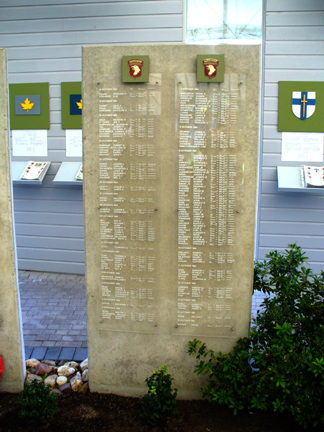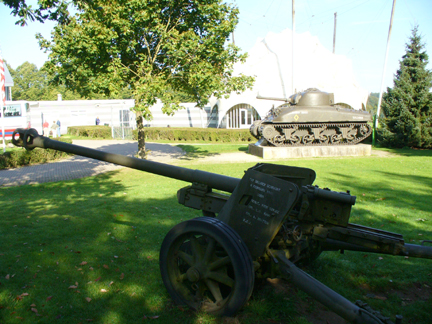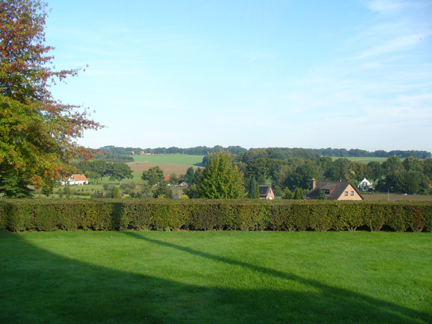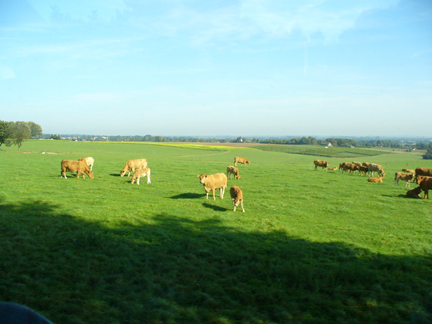In late August 1944 the German Army seemed to be beaten, but at the Dutch and Belgian borders the British troops were delayed because of a supply problem. Fieldmarshall Montgomery planned the Operation Market Garden in which bridges in South Holland were to be captured to allow the Allies access to Germany. Three bridges below Nijmegen were captured by the American 101st Airborne and the 82nd Airborne and the 1st British divisions. There was a German counterattack near the town of Groesbeek, a short distance from Nijmegen. The bridge over the Waal at Nijmegen was captured but the operation failed to capture the bridge across the Rhine at Arnhem, the "Bridge Too Far." As a result the Allies were forced to spend the winter in this area and for the Dutch it was called the "Hungerwinter" where about 22,000 Dutch died of starvation. The National Liberation Museum is based in Groesbeek on one of the landing sites of operation Market Garden.

Our first stop on the way to the National Liberation Museum was at a Canadian military cemetery nearby.

The main feature of the Liberation Museum is the Hall of Honor which is housed in this structure which reminds us of the parachutes used in this brave attempt by the airborn divisions.

Inside is an honor roll of those men who died in this operation. This one honors the 101st Airborne (the Screaming Eagles.)

The interior of the museum contained many reminders of the war and the men who fought in it. Outside was a British cannon and tank.
 It is difficult to believe that these military activities took place in an area as calm and serene as this is now.
It is difficult to believe that these military activities took place in an area as calm and serene as this is now.

Later we took a short bus ride around the area and the local guide pointed out a number of areas where fighting had taken place.
Continue to the city of Nijmegen.
